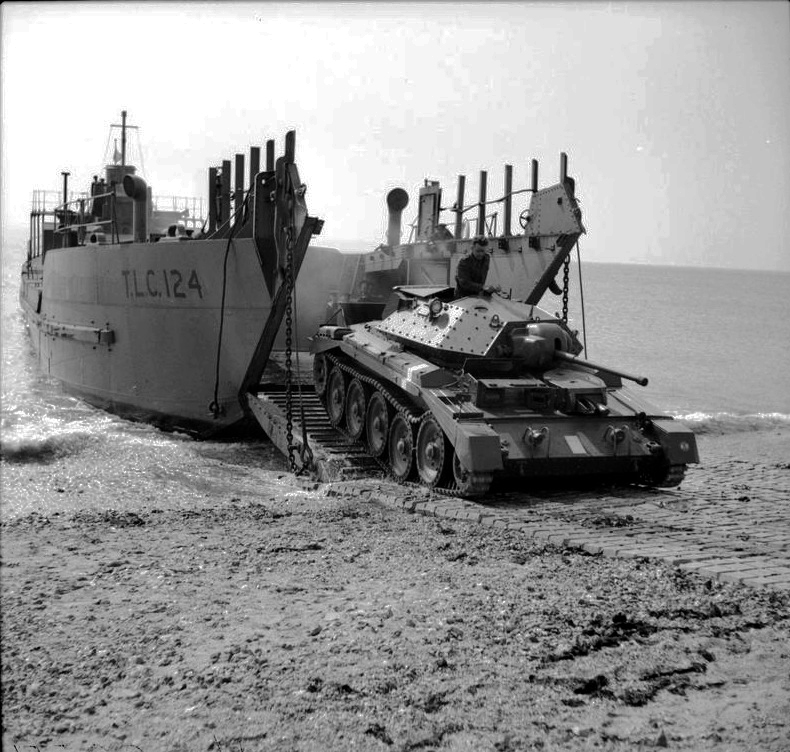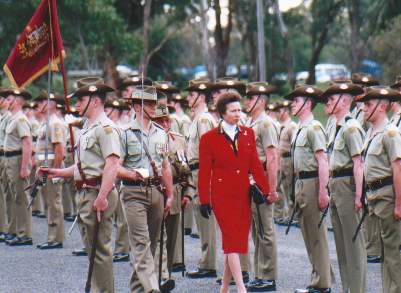|
Douglas Vincent (general)
Major General Douglas (Tim) Vincent, (10 March 1916 – 8 October 1995) was a senior officer in the Australian Army, seeing active service during the Second World War and the Vietnam War. Graduating from the Royal Military College, Duntroon in 1938 into the Signals Corps, he volunteered for service in the Second Australian Imperial Force soon after the outbreak of the Second World War and served in Syria, Western Europe and Borneo. Later, he served as Commander Australian Force Vietnam (COMAFV) during the Vietnam War. After a number of senior staff positions he retired in 1973. He was actively involved in defence issues in his retirement and served as a chairperson of the Returned and Services League of Australia (RSL) prior to his death. Early life and education Vincent was born in Brisbane, Queensland, on 10 March 1916, the son of William Vincent. For much of his life he was better known as Tim. Educated at Brisbane State High School, he entered the Royal Military College, D ... [...More Info...] [...Related Items...] OR: [Wikipedia] [Google] [Baidu] |
2nd Battalion, Royal Australian Regiment
The 2nd Battalion (Amphibious), The Royal Australian Regiment (2 RAR (Amphib)) is an amphibious reconnaissance battalion of the Australian Army part of the 1st Division Amphibious Task Group based at Lavarack Barracks in Townsville. 2 RAR was initially formed as the Australian 66th Australian Infantry Battalion, 2nd AIF in 1945 as part of the 34th Brigade (Australia) and since then it has deployed to wars and conducted operations during Japan, the Korean War (As well as Post-Armistice Service), The Malayan Emergency (Two Tours of 1955-1957 and 1961–1963), Vietnam War (Two Tours 1967-1968 and 1970–1971), Rwanda, Border Protection, East Timor, The Iraq War (2003), The Solomon Islands, The Afghanistan War, Domestic and Foreign Assistance operations due to Flood, Cyclone, etc. In 2011, 2 RAR was selected to be the Army's Trial Battalion to be part of Amphibious Ready Element Landing Force embarked on the Navy's new ''Canberra''-class amphibious assault ships. The conversion pr ... [...More Info...] [...Related Items...] OR: [Wikipedia] [Google] [Baidu] |
Western Front (World War II)
The Western Front was a European theatre of World War II, military theatre of World War II encompassing Denmark, Norway, Luxembourg, Belgium, the Netherlands, the United Kingdom, French Third Republic, France, and Nazi Germany, Germany. The Italian campaign (World War II), Italian front is considered a separate but related theatre. The Western Front's 1944–1945 phase was officially deemed the European Theater of Operations, United States Army, European Theater by the United States, whereas Italy fell under the Mediterranean Theater of Operations, United States Army, Mediterranean Theater along with the North African campaign. The Western Front was marked by two phases of large-scale combat operations. The first phase saw the capitulation of Luxembourg, Netherlands, Belgium, and France during May and June 1940 after their defeat in the Low Countries and the northern half of France, and continued into an air war between Germany and Britain that climaxed with the Battle of Brita ... [...More Info...] [...Related Items...] OR: [Wikipedia] [Google] [Baidu] |
Battle Of Arnhem
The Battle of Arnhem was fought during the Second World War, as part of the Allies of World War II, Allied Operation Market Garden. It took place around the Netherlands, Dutch city of Arnhem and vicinity from 17 to 26 September 1944. The Allies had swept through France during World War II, France and Belgium in World War II, Belgium in August 1944, after the Operation Overlord, Battle of Normandy. Market Garden was proposed by Field Marshal Sir Bernard Montgomery, who favoured a single push northwards over the branches of the Lower Rhine River, allowing the British Second Army (United Kingdom), Second Army to bypass the Siegfried Line and attack the important Ruhr industrial area. The First Allied Airborne Army was to capture the bridges to secure a route for the Second Army with US, British and Polish airborne troops dropped in the Netherlands along the line of the ground advance, being relieved by the British XXX Corps (United Kingdom), XXX Corps. Farthest north, the British ... [...More Info...] [...Related Items...] OR: [Wikipedia] [Google] [Baidu] |
43rd (Wessex) Infantry Division
The 43rd (Wessex) Infantry Division was an infantry Division (military), division of Britain's Territorial Army (United Kingdom), Territorial Army (TA). The division was first formed in 1908, as the Wessex Division. During the World War I, First World War, it was broken-up and never served as a complete formation. It was reformed in the TA in 1920, and then served in the Western Front (World War II)#1944–1945: The Second Front, campaign in North West Europe from June 1944 until May 1945, during the Second World War. The division suffered heavy casualties and gained an excellent reputation. After the Second World War, the division formed part of the postwar TA, and became the 43rd (Wessex) Division/District in 1961. It was finally disbanded in 1967. Formation The Territorial Force (TF) was formed on 1 April 1908 following the enactment of the Territorial and Reserve Forces Act 1907 (7 Edw.7, c.9) which combined and re-organised the old Volunteer Force (Great Britain), Volunteer ... [...More Info...] [...Related Items...] OR: [Wikipedia] [Google] [Baidu] |
7th Armoured Division (United Kingdom)
The 7th Armoured Division (Desert Rats) was an armoured division of the British Army. It was formed as the Mobile Division (Egypt) on 27 September 1938, after increased tensions between Britain and the Axis powers. This was part of an effort to reinforce and maintain the British strategic presence in Egypt to defend the Suez Canal, which was seen as vital to the British Empire's interests. In February 1940, the formation was renamed as the 7th Armoured Division. During its early years, the jerboa was adopted as the mascot and divisional insignia giving rise to the nickname Desert Rats. The division fought in most of the major battles of the Western Desert campaign, was then engaged in the Tunisian campaign, and this was followed by the participation in the Italian campaign. It was then withdrawn from Italy and dispatched to the United Kingdom, to prepare for Operation Overlord. In June 1944, it landed in France and subsequently fought across western Europe and ended the war ... [...More Info...] [...Related Items...] OR: [Wikipedia] [Google] [Baidu] |
XXX Corps (United Kingdom)
XXX Corps (30 Corps) was a corps of the British Army during the Second World War. The corps was formed in the Western Desert in September 1941. It provided extensive service in the North African Campaign and many of its units were in action at the Second Battle of El Alamein in late 1942. It then took part in the Tunisia Campaign and formed the left flank during the Allied invasion of Sicily in 1943. It returned briefly to the United Kingdom; it then served in the Allied Invasion of Normandy in June 1944. In September 1944, it formed the Garden (cross land) contingent of Operation Market Garden; due to the failure of the Market (airborne) contingent to seize the bridge at Nijmegen, XXX Corps arrived too late at the subsequent ()and ultimateArnhem bridge, effectively resulting in the loss of the British 1st Airborne Division in the prolonged Battle of Arnhem. XXX Corps continued to serve in the Netherlands, and finally in Operation Veritable in Germany until May 1945. North ... [...More Info...] [...Related Items...] OR: [Wikipedia] [Google] [Baidu] |
Amphibious Warfare
Amphibious warfare is a type of offensive military operation that today uses naval ships to project ground and air power onto a hostile or potentially hostile shore at a designated landing beach. Through history the operations were conducted using ship's boats as the primary method of delivering troops to shore. Since the Gallipoli Campaign, specialised watercraft were increasingly designed for landing troops, material and vehicles, including by landing craft and for insertion of commandos, by fast patrol boats, zodiacs (rigid inflatable boats) and from mini-submersibles. The term ''amphibious'' first emerged in the United Kingdom and the United States during the 1930s with introduction of vehicles such as Vickers-Carden-Loyd Light Amphibious Tank or the Landing Vehicle Tracked.The first LVT prototypes were named '' Alligator'' and '' Crocodile'', though neither species is actual amphibian Amphibious warfare includes operations defined by their type, purpose, sca ... [...More Info...] [...Related Items...] OR: [Wikipedia] [Google] [Baidu] |
Invasion Of Normandy
Operation Overlord was the codename for the Battle of Normandy, the Allied operation that launched the successful liberation of German-occupied Western Europe during World War II. The operation was launched on 6 June 1944 ( D-Day) with the Normandy landings (Operation Neptune). A 1,200-plane airborne assault preceded an amphibious assault involving more than 5,000 vessels. Nearly 160,000 troops crossed the English Channel on 6 June, and more than two million Allied troops were in France by the end of August. The decision to undertake cross-channel landings in 1944 was made at the Trident Conference in Washington in May 1943. American General Dwight D. Eisenhower was appointed commander of Supreme Headquarters Allied Expeditionary Force, and British General Bernard Montgomery was named commander of the 21st Army Group, which comprised all the land forces involved in the operation. The Normandy coast in northwestern France was chosen as the site of the landings, with the ... [...More Info...] [...Related Items...] OR: [Wikipedia] [Google] [Baidu] |
25th Brigade (Australia)
The 25th Brigade was a brigade-sized infantry unit of the Australian Army that served during the Second World War. Raised in July 1940 and consisting of three infantry battalions, the 25th Brigade initially served in the United Kingdom, where it formed part of the garrison tasked with defending against a possible German invasion. In 1941, the brigade was redeployed to the Middle East where it took part in the Syria–Lebanon campaign fighting several actions around Merdjayoun and Jezzine. Following Japan's entry into the war, the 25th Brigade was transferred back to Australia and subsequently took part in the fighting in New Guinea. Throughout 1942–1943, the brigade fought in the final stages of the Kokoda Track campaign and around Buna–Gona. Later, they took part in the fighting around Lae and Shaggy Ridge, before being withdrawn to Australia for a long period of rest and reorganisation. In 1945, the 25th Brigade was committed to the Borneo campaign, carrying out an ... [...More Info...] [...Related Items...] OR: [Wikipedia] [Google] [Baidu] |
7th Division (Australia)
The 7th Division was an infantry Division (military), division of the Australian Army. It was formed in February 1940 to serve in World War II, as part of the Second Australian Imperial Force (2nd AIF). The division was raised on the British establishment of nine infantry battalions per division and consisted of two new brigades and three of the original 12 battalions of the 6th Division (Australia), 6th Division forming the third brigade. The division is sometimes known by the nickname "The Silent Seventh", due to a perception that its achievements were unrecognised, in comparison to the other Australian divisions. The origin of this belief appears to be censorship of the part played by the 7th Division in the fierce fighting in the 1941 Syria-Lebanon campaign.James 2017 The 7th Division along with the 6th and 9th Division (Australia), 9th Australian Divisions were the only divisions to serve in both the Middle East and the South West Pacific Area. It was disbanded in 1946, follo ... [...More Info...] [...Related Items...] OR: [Wikipedia] [Google] [Baidu] |
Royal Australian Corps Of Signals
The Royal Australian Corps of Signals (RASigs) is one of the 'arms' (combat support corps) of the Australian Army. It is responsible for installing, maintaining, and operating all types of telecommunications equipment and information systems. The motto of the Signals Corps is ''Certa Cito'' and is translated as 'Swift and Sure', signifying the aim of the signal service – that communication be carried out with maximum speed and certainty. Like their Royal Corps of Signals, British counterparts, the Royal Australian Corps of Signals' flag and hat badge feature Mercury (mythology), Mercury, the winged messenger of the gods, affectionately referred to by members of the corps as "Jimmy" (the origin dates back to the merge with Engineers when the Engineer's band's Drum Major had a "Jimmy" on his staff). Modern Army Command and Control (Military), command and control systems demand reliable, high-speed transfer of large volumes of data. The communications systems provided by Signals mu ... [...More Info...] [...Related Items...] OR: [Wikipedia] [Google] [Baidu] |
Regular Army
A regular army is the official army of a state or country (the official armed forces), contrasting with irregular forces, such as volunteer irregular militias, private armies, mercenaries, etc. A regular army usually has the following: * a standing army, the permanent force of the regular army that is maintained under arms during peacetime. * a military reserve force that can be mobilized when needed to expand the effectiveness of the regular army by complementing the standing army. A regular army may be: * a ''conscript army'', including professionals, volunteers and also conscripts (presence of enforced conscription, including recruits for the standing army and also a compulsory reserve). * a ''professional army'', with no conscripts (absence of compulsory service, and presence of a voluntary reserve), is not exactly the same as a standing army, as there are standing armies both in the conscript and the professional models. In the United Kingdom and the United States, ... [...More Info...] [...Related Items...] OR: [Wikipedia] [Google] [Baidu] |






